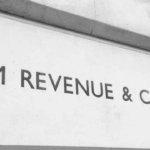More than eight million people in the UK will be pulled into higher income tax bands or into the tax system for the first time by the end of the decade, as a result of the continued freeze on tax thresholds, according to projections from the Office for Budget Responsibility (OBR).
Released alongside the government’s March spring statement, the OBR report estimates that by 2029-30, around 8.3 million individuals will be affected by “fiscal drag” — a term used to describe the effect of rising wages against static tax thresholds, which increases the tax burden without changing official rates.
The current freeze on income tax thresholds, first introduced by Rishi Sunak in 2021 while serving as chancellor, was initially intended as a post-pandemic measure to rebuild public finances. However, despite strong wage growth and record inflation in recent years, the policy remains in place.
Had the thresholds kept pace with inflation, the OBR says, the number of income taxpayers by the end of the decade would stand at 37 million. Instead, the total is projected to hit 41.1 million.
Fiscal drag, often dubbed a “stealth tax,” typically goes unnoticed until individuals see larger portions of their income taxed at higher rates. The consequence, experts warn, is a growing tax burden on households, even as the government maintains its pledge not to raise headline tax rates for working people.
The debate over the fairness and effectiveness of the policy continues. The Institute for Fiscal Studies has described the approach as a hidden way to raise revenue, while the Resolution Foundation argues that it is a progressive strategy that places more of the burden on higher earners.
Chancellor Rachel Reeves has committed to ending the threshold freeze from 2028-29, but the OBR’s latest forecasts suggest the UK’s overall tax burden will continue to rise in the interim — reaching its highest level since the Second World War.
In her October budget, Reeves introduced a £25 billion rise in employers’ national insurance contributions and reaffirmed the threshold freeze. Although her March spring statement included £5 billion in welfare cuts, she retained a £9.9 billion buffer under her fiscal rules, intended to protect day-to-day spending.
The Treasury defended the current policy, stating: “This government inherited the previous government’s policy of frozen tax thresholds. At the budget and the spring statement, the chancellor announced that we would not extend that freeze. We are also protecting payslips for working people by keeping our promise not to raise the basic, higher or additional rates of income tax, employee national insurance or VAT.”
Although inflation has eased to 2.6% from a peak of 11.1% in October 2022, the legacy of the freeze means millions will continue to feel the financial pressure well into the next decade.










